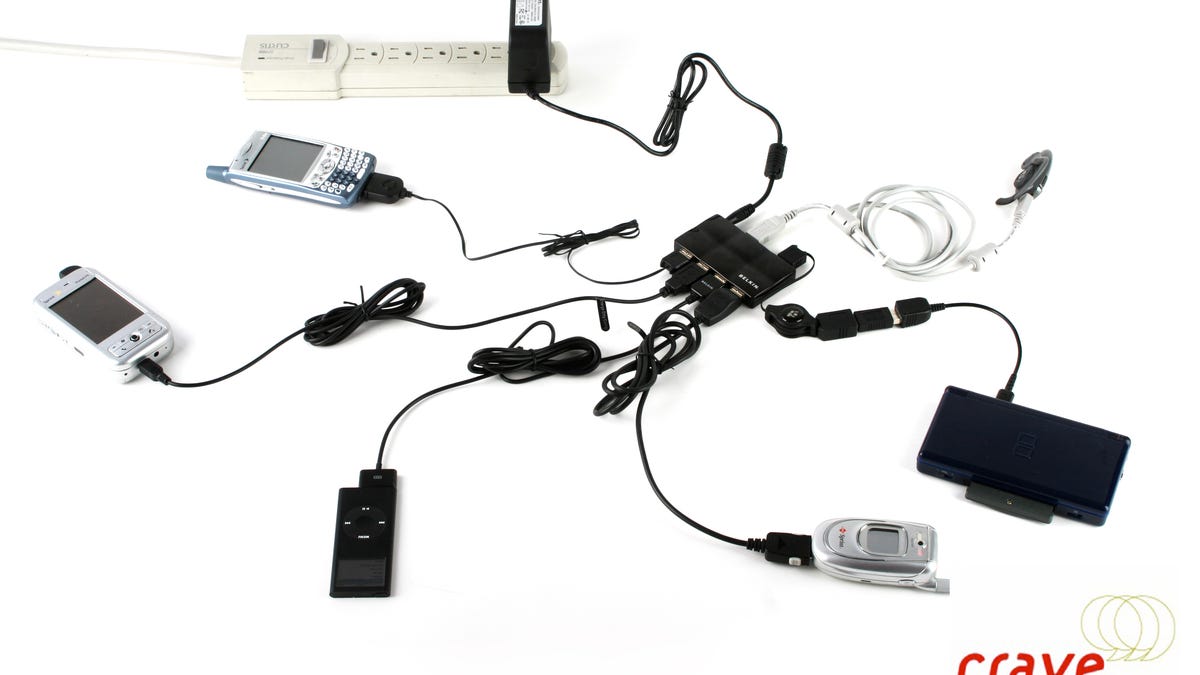Transform a USB hub into the ultimate DIY gadget charger
If you travel with a gaggle of 5-volt devices, a simple powered USB hub can charge as many as seven at a time.

And then I realized it was already sitting on my desk. And it's probably sitting on yours, too.
I'm talking about a standard USB hub--those little accessories that multiply one of your PC's USB ports by a factor of four, five, six, or even seven. I took a spare seven-porter--the
The photo above is certainly an unlikely scenario for the average person--in truth, most of those devices were scrounged from coworkers. But it's a perfect illustration of the potential of such a setup: pretty much anything that accepts USB charging (iPods, Blackberries, cellphones, headsets, Xbox 360 controllers, and the like) should be compatible. Even products that don't support USB charging per se may work--if they're rated at the same voltage standard as USB (5v). For instance, I had no problem charging the Nintendo DS Lite (which is technically 5.2v, still seemed to work fine) and old Sony PSP.
If you're looking to duplicate this setup, there are some caveats, of course. I was using some proprietary adapter cables (to charge the aforementioned PSP and DS Lite handhelds), which would have to be purchased at extra expense. Other cables that should work--such as some retractable USB cables--didn't. And some devices may default to "trickle charge" mode when using their USB input, which makes for a slower recharge. (That didn't bother me--this setup is primarily for overnight juice-ups, so a couple of extra hours didn't matter.) Another annoyance: using third-party chargers may possibly violate the warranty of certain devices, so you might want to check the manual before plugging in. But, basically, if you've already docked a given device with your PC, using a standalone charger is almost certainly a safe bet. Likewise, always use caution when handling any chargers that are plugged in to a wall outlet--it is live electricity, after all. Bottom line: the "hub as charger" workaround should work, but your mileage may vary--you'll want to double-check your devices and cables accordingly, or limit yourself to charging just three or four units simultaneously.
To be fair, this workaround may not be news to many of you; in fact, a little creative Googling after the fact shows that I'm hardly the first person to have this same idea. But until a commercial solution becomes available--say, a second-gen Belkin Dual USB Power Adapter (or a competing product from a rival manufacturer) with double or triple the capacity--I think I've found my new home and travel charging station. Even with all the cables involved, using a single AC adapter and a slimline hub for up to seven other devices is a winning solution to the bulky alternatives, both at home (no more powerstrip) and especially on the road (travel with one AC adapter, versus up to seven). For me, at least, it's a much better alternative to the CallPod ChargePod.

